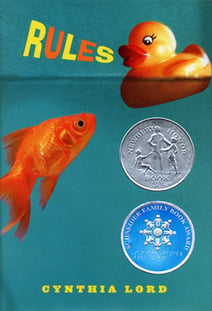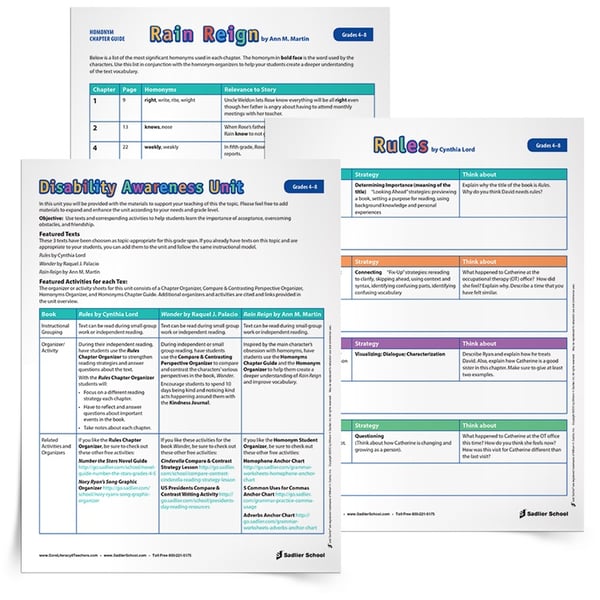1.800.221.5175
Reading & Writing
From Phonics to Reading
Grades K–3
|
Building Reading Success with Wiley Blevins
Grades K–5
Vocabulary
Vocabulary Workshop, Tools for Comprehension
Grades 1–5
Vocabulary Workshop Achieve
Grades 6–12+
|



 The inspiration for this unit is the 2007 Newbery Medal winner and Dorothy Canfield Fisher Children's Book award winning book Rules by Cynthia Lord. I have been using the book Rules for almost eight years. I adore this book! It is about a middle school aged girl (Catherine) who has an autistic brother (David). Every chapter is subtitled with one of Catherine's rules for her brother David. These rules are intended to help David embarrass Catherine less and to encourage him to display what Catherine considers “normal” behavior. The author seamlessly weaves the rules into an engaging storyline. Even though the rules were created for David's benefit, over the course of the book it is Catherine who learns a valuable lesson about acceptance and friendship.
The inspiration for this unit is the 2007 Newbery Medal winner and Dorothy Canfield Fisher Children's Book award winning book Rules by Cynthia Lord. I have been using the book Rules for almost eight years. I adore this book! It is about a middle school aged girl (Catherine) who has an autistic brother (David). Every chapter is subtitled with one of Catherine's rules for her brother David. These rules are intended to help David embarrass Catherine less and to encourage him to display what Catherine considers “normal” behavior. The author seamlessly weaves the rules into an engaging storyline. Even though the rules were created for David's benefit, over the course of the book it is Catherine who learns a valuable lesson about acceptance and friendship.
